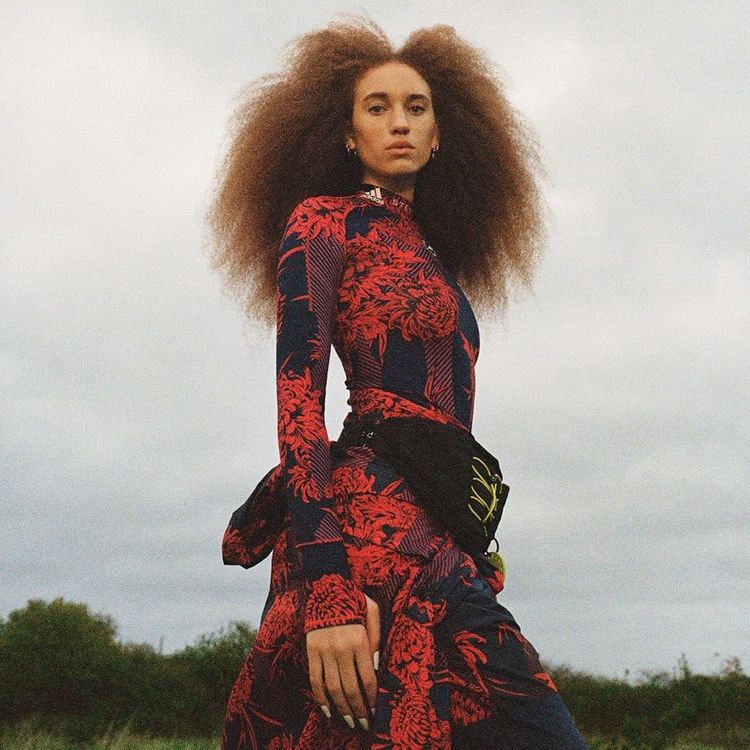Stella McCartney has introduced us to mushroom leather (recently co-opted by Hermés) and Karl Lagerfeld has started to make its own version with cacti
The eco-material revolution is here: and designers are very much on board. Stella McCartney is a long-standing inspiration in the industry for her constant innovation in the field of ethical fashion and has, over the years, used regenerated cashmere and sustainable viscose in her collections. Now, up-and-coming Scandi brands from Nudie Jeans to Filippa K are following her example. Here are the new eco-friendly materials to have on your radar.
Cupro
Considered one of the more sustainable textiles, Cupro is a biodegradable fibre made from naturally derived materials and is often used as an alternative to silk. Made from pre-consumer waste transformed into regenerated cellulose fibre, Cupro is completely vegan. In Scandinavia, brands such as Arket, Cos, Envelope1976 and Attire are all using Cupro in their collections while in the designer sphere, the material is loved by houses from Bottega Veneta to Sacai and Hugo Boss.
Wine leather
An innovative vegan biomaterial partly made from the by-products of winemaking, wine leather is made by Vegea, an Italian company. Grape skin and seed fibres are repurposed to make ‘leather’ which is 100 per cent vegan and can be recycled. What’s more, the production process consumes hardly any water – a big environmental bonus. Founded in Milan in 2016, Vegea has since received awards for its contribution to the fashion industry. Pangaia recently launched a pair of sneakers made using wine leather, H&M uses the product in its boots and & Other Stories have started making wine leather sandals.
Pineapple leather
Pineapple leather, also know as Piñatex, is one of the best-known fruit-based vegan leathers on the market. An innovative natural textile made from pineapple leaf fibres, Piñatex uses the by-products of existing agriculture to help reduce waste and create an additional income stream for farming communities. The material was developed by Carmen Hijosa, who has been working on creating an alternative to leather since the 1990s. Today, Piñatex is used by Hugo Boss, Nae Vegan and H&M.
Orange Fiber
The first patented material made from citrus juice by-products, Orange Fiber is a cellulose yarn that’s soft, silky and lightweight. A good replacement for viscose, this Italian-made textile has been used by H&M and was employed by Salvatore Ferragamo in 2016 to create a capsule collection.
Potato waste
Even potatoes have received the high fashion treatment: Chip[s] Board manufactures a wide range of materials created using potato waste. Its translucent or fibre reinforced bioplastics, with their incredible surface finish and durability, can be used in fashion and interior design. Chip[s] Board have worked in the past with Cubitts London on eyewear and textile designer Isabel Fletcher.
Agraloop
Transforming leftovers from food and medicine crops into high-value, natural fibre fashion products, Agraloop has won a Global Change Award. The Agraloop refines natural fibres derived from agricultural crops into a textile-grade fibre called Agraloop BioFibre, which can be used in garment manufacturing, packaging and organic fertilizer production.
Mushroom leather
Mylo is a unique, sustainable textile derived from mushrooms. Mycelium cells are grown on beds of sawdust and other organic materials, to form an interconnected, 3D network which is processed, tanned and dyed to make Mylo. Used by designers worldwide, Stella McCartney, Kering, Adidas and Luluemon have all invested in Mylo's development.
Cactus leather
This year, the eponymous Karl Lagerfeld label launched a vegan, cactus leather bag in collaboration with supermodel and sustainability ambassador, Amber Valleta. The bags are made of an innovative material by Desserto that’s breathable, flexible, non-toxic and partly biodegradable, created from prickly pear cacti grown on an organic farm in Mexico. H&M have also been using cactus leather, as has the Swedish brand Deadwood.
Cork
Gathered from the bark of trees and regenerated after harvesting, cork bark is hydrophobic: in other words, it repels water. An inherently sustainable resource that’s both renewable and biodegradable, cork can be used to make everything from shoes to yoga mats.
Seaweed
Not just a key ingredient in your sushi, seaweed can also be spun into a cellulose fibre using the same processes used to make Tencel and some bamboo. Seaweed grows abundantly in its natural habitat and is rich in essential substances like vitamins, antioxidants, amino acids and minerals. Pangaia are perhaps the most famous brand currently pioneering the use of seaweed fibres in fashion.
